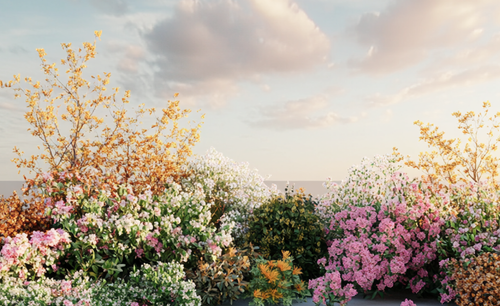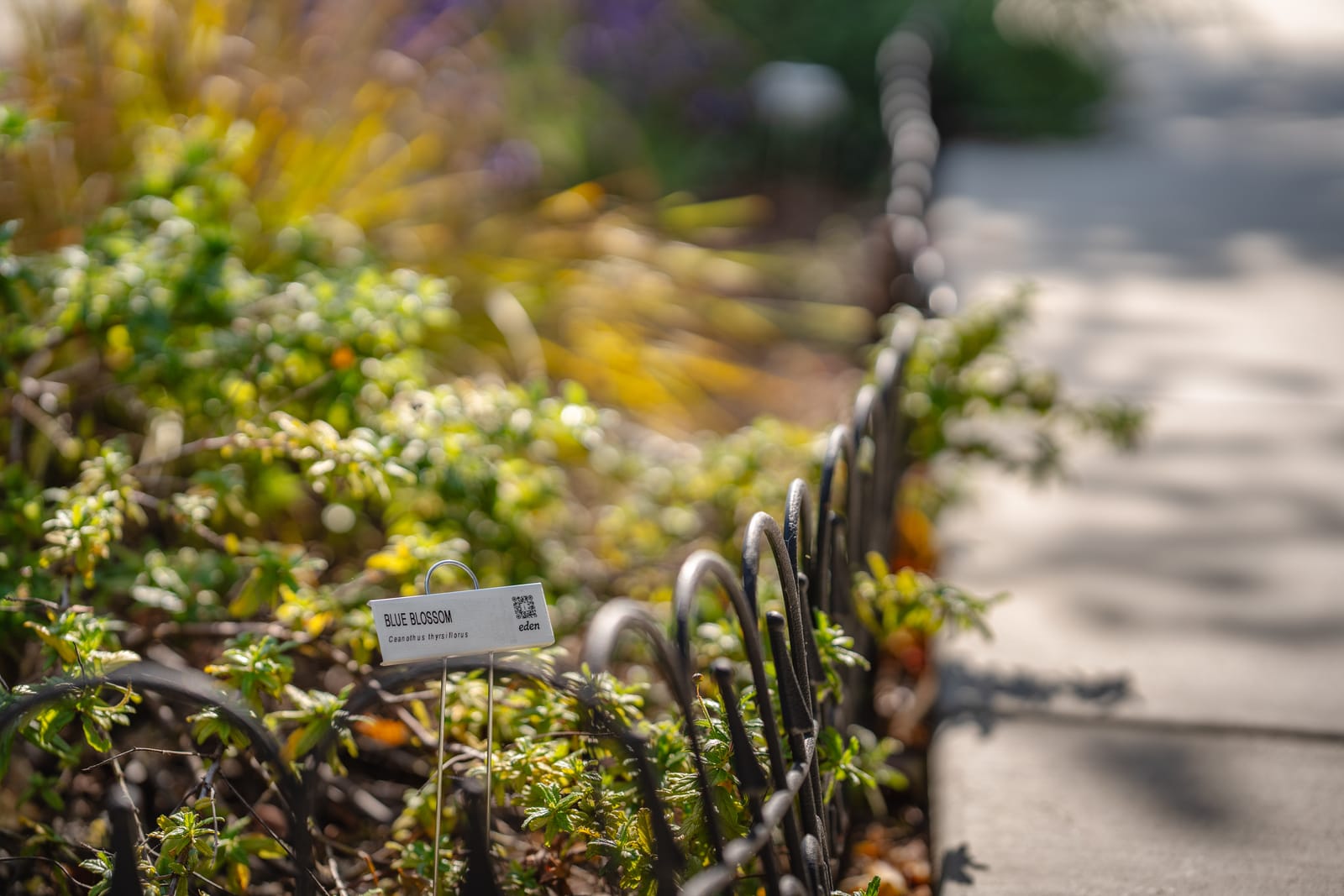When it comes to designing a beautiful outdoor space, plants are more than decoration — they’re the building blocks of your landscape. The right plant selection can elevate a small space, solve practical challenges, and create a garden that feels intentional, calming, and alive.
But if you’ve ever stood in a nursery overwhelmed by choices — blooms, heights, colors, Latin names — you’re not alone. Designing a plant palette doesn’t have to be intimidating. In this guide, we’ll break down how to choose plants that work with your space, not against it.
Whether you're planning a sidewalk garden in San Francisco or refreshing your front yard, here’s how to choose plants that bring lasting beauty and balance.
Start with Purpose, Not Preference
Before picking plants based on color or popularity, start by asking:
What do I want this plant to do?
Do you need privacy? Shade? Pollinator habitat? Do you want to soften the edge of a concrete path or reduce runoff on a slope?
Each plant in your garden should have a job — and your layout should reflect that. Think of your garden like a cast of characters: tall plants set the stage, mid-sized plants guide the eye, and ground covers tie everything together.
And don’t forget your site conditions. The most beautiful plant will struggle in the wrong place. Sun, soil, wind, drainage — knowing your conditions helps you choose plants that are meant to thrive there.
Build a Cohesive Plant Palette
A plant palette is more than just a list — it’s your garden’s visual language.
The best-designed gardens repeat key plants and textures to create rhythm and flow. Choose a handful of anchor species you love, then add variety with texture, form, or seasonal change — not constant species switching.
Try combining soft grasses with structured succulents, or pairing evergreen shrubs with pops of seasonal color. Too much variety can create visual chaos. A tight, thoughtful palette brings clarity and cohesion.
Use Plant Size to Shape Your Space
Tall plants and trees aren’t just for privacy. They define space, create shade, and serve as focal points. Use them at corners, along fences, or at entrances for strong visual anchors.
Mid-sized plants guide the viewer’s eye along paths or borders, helping the garden feel intentional and well-paced.
Ground covers — the low-growers — fill in gaps, prevent erosion, and create that lush, layered look. But remember: spacing matters. Overplanting leads to poor airflow, root competition, and messy maintenance down the road.
Always check the mature size of a plant before adding it to your plan.
Shrubs vs. Ground Covers: Know the Difference
Shrubs and ground covers may seem interchangeable, but they play very different roles.
Shrubs are typically woody, upright, and structural — think of them as the framework of your planting design. They’re great for defining edges, creating privacy, or anchoring entryways.
Ground covers are low, often spreading plants that cover soil, reduce weeds, and soften transitions. Some popular native options include Berkeley sedge, California strawberry, and creeping thyme.
Both can be beautiful — but knowing when to use each makes all the difference in your design.
Choose Colors That Complement the Space
Color is powerful — it sets the mood and draws attention. But too much variety can overwhelm a space.
Start with a color “feel”: do you want calm and subtle, or vibrant and playful? Then, choose 2–3 main hues and build around them with variations in tone and texture.
Keep in mind how your chosen colors will look against your hardscape — like wood fencing, stucco walls, or concrete sidewalks. And think seasonally: some colors pop in spring, while others peak in late summer or fall.
Foliage color is just as important as flowers. Silvery greens, deep purples, and warm golds can bring year-round interest without relying on constant blooms.
Three Example Plant Palettes (And Why They Work)
1. Sunny & Pollinator-Friendly (Full Sun, Minimal Watering)
- California poppy (seasonal color)
- Yarrow (long bloom, pollinator magnet)
- Red yucca (structure and height)
- Deergrass (soft movement, texture)
- Creeping thyme (fragrant ground cover)
Why it works: This palette combines bold seasonal color from California poppies with the reliable, long-blooming power of yarrow to attract bees and butterflies. Red yucca adds height and architectural interest without overwhelming smaller spaces, while deergrass introduces texture and graceful movement. Creeping thyme ties it all together as a low-growing, fragrant filler that reduces weeds and provides soft ground-level interest — all thriving in full-sun, low-water conditions.
2. Coastal Fog & Wind-Tolerant (Outer Sunset or Richmond)
- Ceanothus (evergreen structure, spring bloom)
- Manzanita (sculptural, hardy)
- Berkeley sedge (wind-resilient ground cover)
- Coast buckwheat (soft form, wildlife-friendly)
- Douglas iris (color pop in filtered light)
Why it works: This palette thrives in fog-heavy, windy microclimates. Ceanothus and manzanita both provide evergreen structure and are built to withstand sandy soil and wind. Berkeley sedge hugs the ground and thrives with little sun, while coast buckwheat adds a soft, sprawling layer that attracts pollinators. Douglas iris provides a striking pop of color that blooms reliably in coastal light. Together, they offer year-round visual interest with minimal care.
3. Small Space / Low-Growing Design (Tight Pathways or City Permits)
- Heuchera (coral bells) (compact color)
- California strawberry (low edible ground cover)
- Blue-eyed grass (tiny upright form)
- Native sage (aromatic, compact)
- Eriogonum (buckwheat) (pollinator-friendly anchor)
Why it works: Designed for spaces that require low profiles (such as sidewalks under city height regulations), this palette keeps everything under 3 feet. Heuchera brings deep foliage color without bulk. California strawberry acts as an edible and lush green carpet. Blue-eyed grass adds vertical contrast while still remaining compact. Native sage offers fragrance and seasonal interest without mess. Eriogonum anchors the palette with soft flowers that invite pollinators and echo the form of nearby perennials — creating cohesion, even in tight spaces.
Design Like a Gardener, Think Like a Designer
You don’t need to be a horticulturist to create a thriving, beautiful plant palette. With a little planning — and a lot of observation — your landscape can feel balanced, low-maintenance, and full of life.
Start small. Choose plants with purpose. Repeat what works. And let the plants guide the space over time.
Want a custom plant palette designed for your space and San Francisco’s microclimates?
Start with Eden → edenstudio.ai
Let’s turn every curb strip, yard, or forgotten corner into something vibrant, rooted, and intentional.







